Abstract
Incubation of normal feline serum with purified feline leukemia virus (FeLV) at 37 degrees C for 30 min resulted in the activation of the complement system via the classical pathway as demonstrated by consumption of the C1, C4, C2, C3, and, to a lesser extent, the later C components. A similar finding was observed when normal human serum was substituted for normal cat serum. In contrast, complement-dependent lysis of FeLV with normal feline serum as assayed by the release of ribonucleic acid-dependent deoxyribonucleic acid polymerase was one-third that of complement-dependent FeLV lysis with normal human serum. The levels of total hemolytic complement and neutralizing antibody in individual feline sera were also not proportional to the degree of virolytic activity. These observations indicate that the inefficient virolysis of FeLV by normal cat serum may be one of the factors contributing to the high incidence of leukemia observed in cats.
Full text
PDF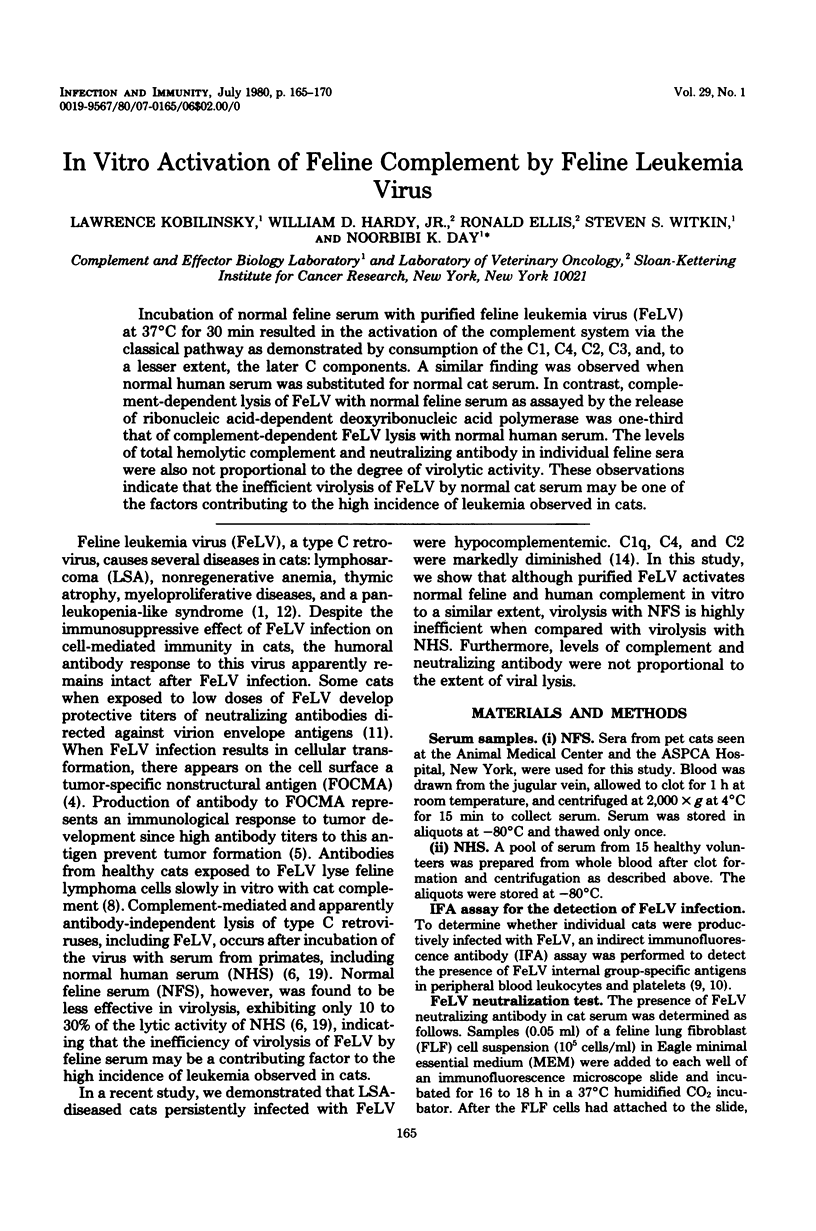
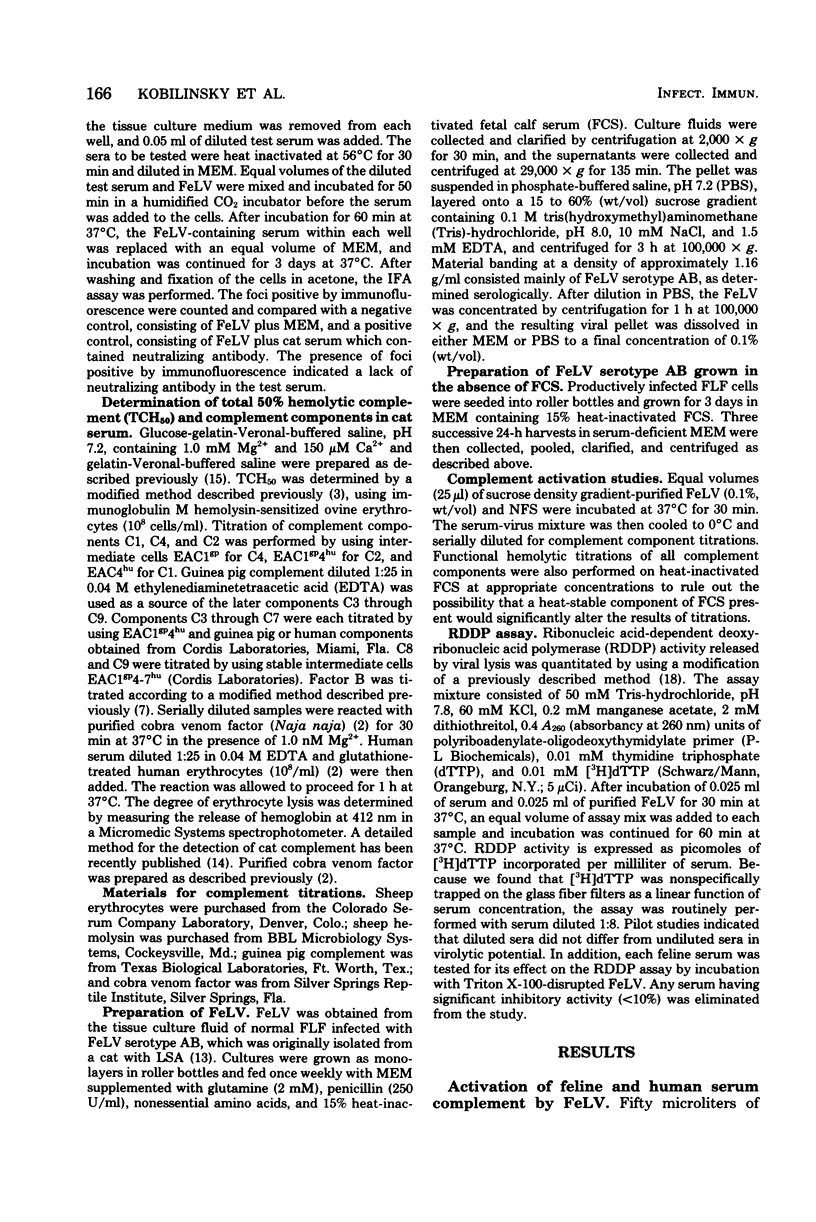
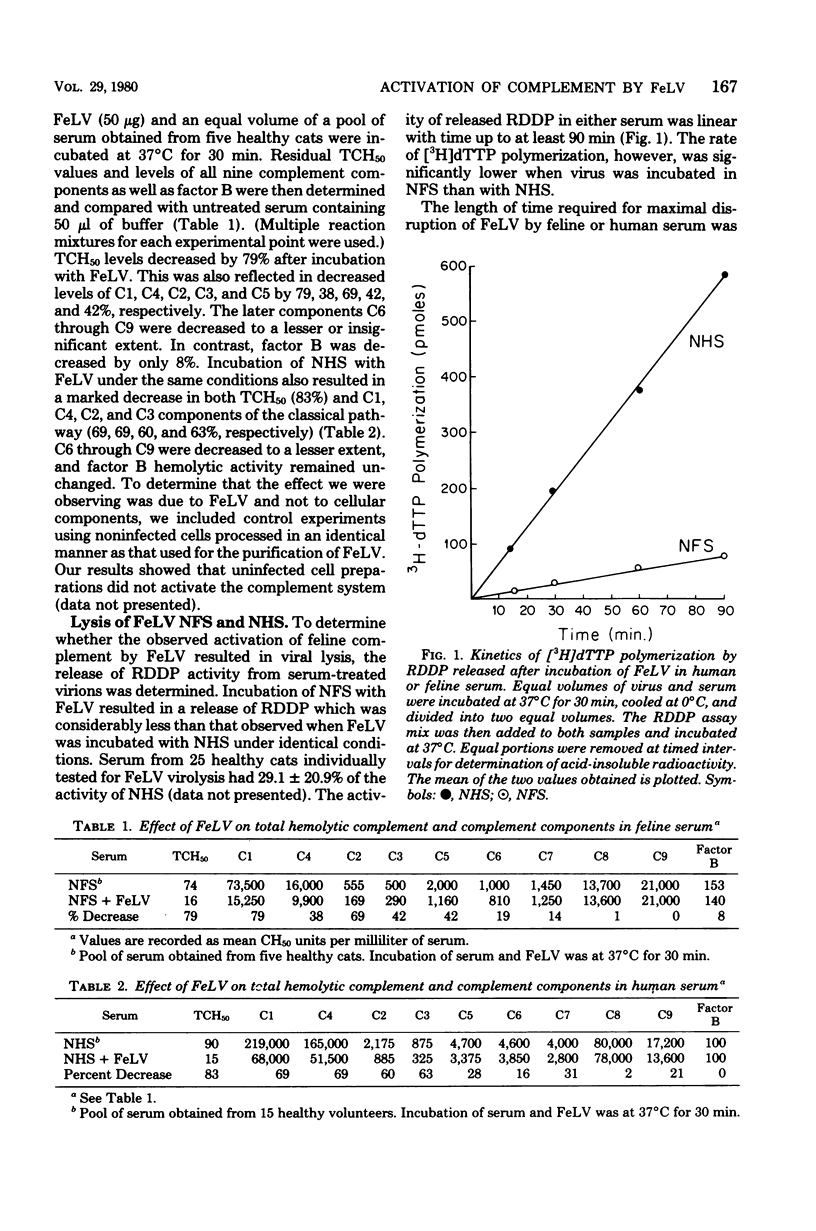
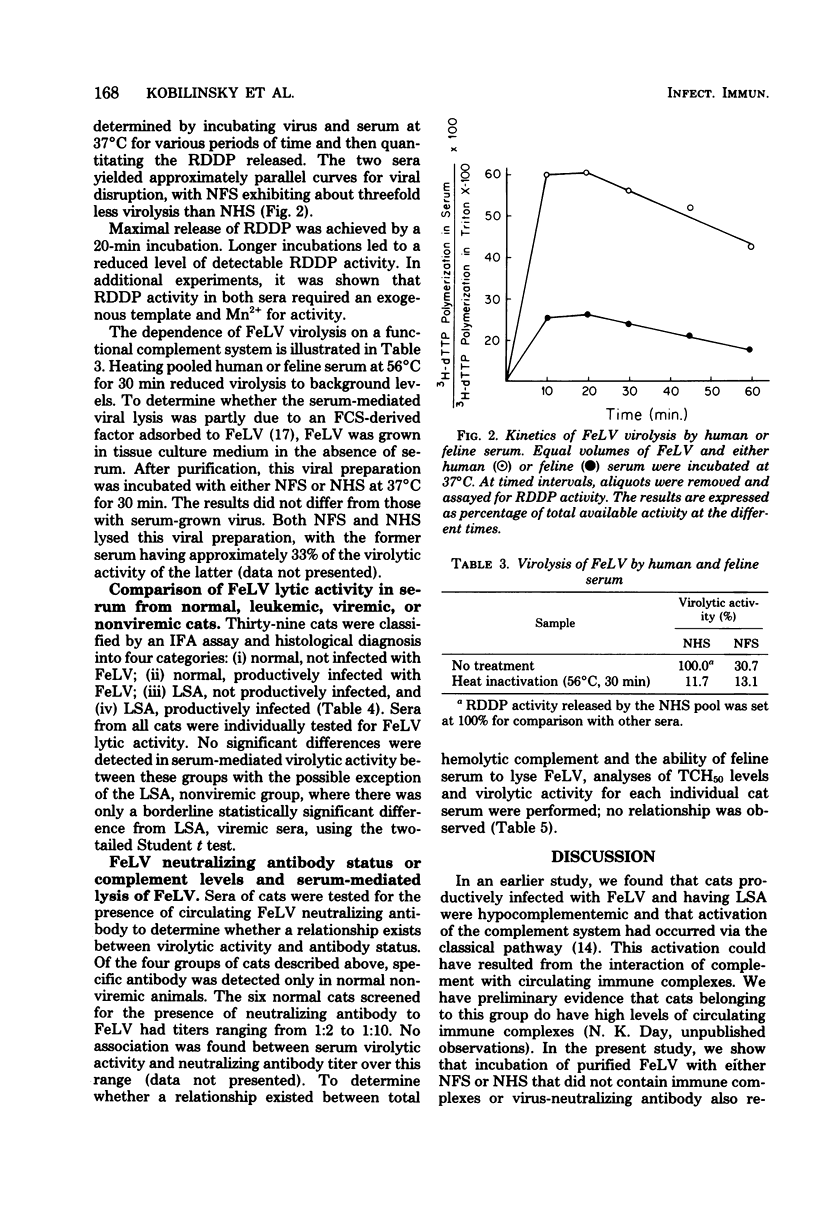
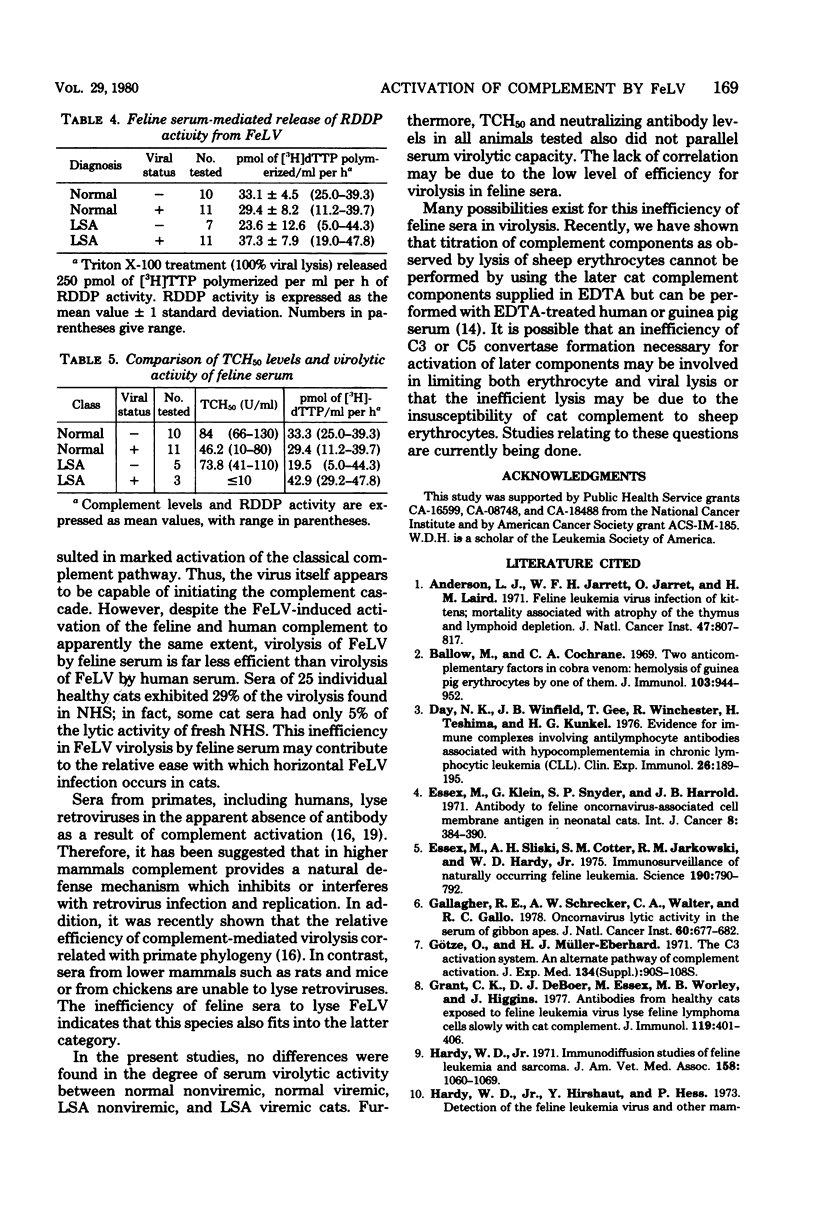
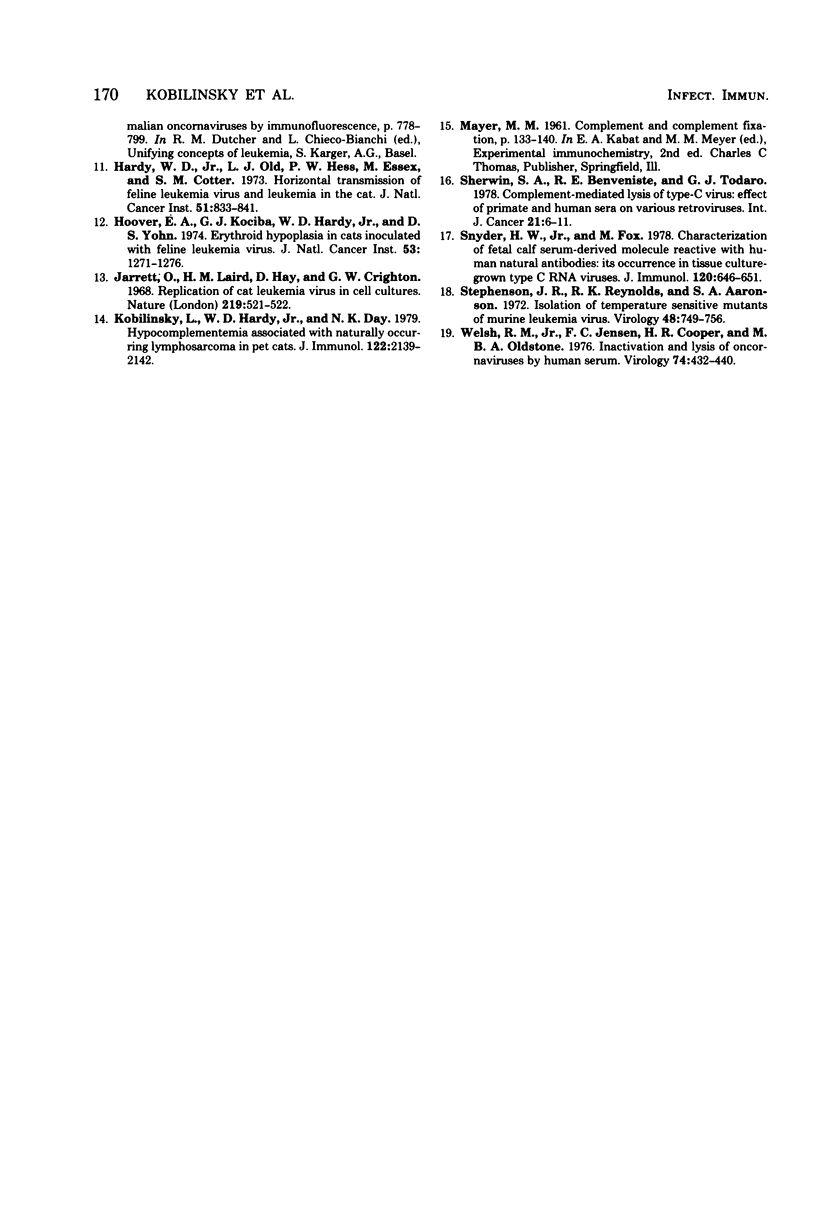
Selected References
These references are in PubMed. This may not be the complete list of references from this article.
- Anderson L. J., Jarrett W. F., Jarrett O., Laird H. M. Feline leukemia-virus infection of kittens: mortality associated with atrophy of the thymus and lymphoid depletion. J Natl Cancer Inst. 1971 Oct;47(4):807–817. [PubMed] [Google Scholar]
- Ballow M., Cochrane C. G. Two anticomplementary factors in cobra venom: hemolysis of guinea pig erythrocytes by one of them. J Immunol. 1969 Nov;103(5):944–952. [PubMed] [Google Scholar]
- Day N. K., Winfield J. B., Gee T., Winchester R., Teshima H., Kunkel H. G. Evidence for immune complexes involving anti-lymphocyte antibodies associated with hypocomplementaemia in chronic lymphocytic leukaemia (CLL). Clin Exp Immunol. 1976 Nov;26(2):189–195. [PMC free article] [PubMed] [Google Scholar]
- Essex M., Klein G., Snyder S. P., Harrold J. B. Antibody to feline oncornavirus-associated cell membrane antigen in neonatal cats. Int J Cancer. 1971 Nov 15;8(3):384–390. doi: 10.1002/ijc.2910080305. [DOI] [PubMed] [Google Scholar]
- Essex M., Sliski A., Cotter S. M., Jakowski R. R., Hardy W. D., Jr Immunosurveillance of naturally occurring feline leukemia. Science. 1975 Nov 21;190(4216):790–792. doi: 10.1126/science.173019. [DOI] [PubMed] [Google Scholar]
- Gallagher R. E., Schrecker A. W., Walter C. A., Gallo R. C. Oncornavirus lytic activity in the serum of gibbon apes. J Natl Cancer Inst. 1978 Mar;60(3):677–682. doi: 10.1093/jnci/60.3.677. [DOI] [PubMed] [Google Scholar]
- Grant C. K., DeBoer D. J., Essex M., Worley M. B., Higgins J. Antibodies from healthy cats exposed to feline leukemia virus lyse feline lymphoma cells slowly with cat complement. J Immunol. 1977 Aug;119(2):401–406. [PubMed] [Google Scholar]
- Götze O., Müller-Eberhard H. J. The C3-activator system: an alternate pathway of complement activation. J Exp Med. 1971 Sep 1;134(3 Pt 2):90s–108s. [PubMed] [Google Scholar]
- Hardy W. D., Jr Immunodiffusion studies of feline leukemia and sarcoma. J Am Vet Med Assoc. 1971 Mar 15;158(6 Suppl):1060+–1060+. [PubMed] [Google Scholar]
- Hoover E. A., Kociba G. J., Hardy W. D., Jr, Yohn D. S. Erythroid hypoplasia in cats inoculated with feline leukemia virus. J Natl Cancer Inst. 1974 Nov;53(5):1271–1276. doi: 10.1093/jnci/53.5.1271. [DOI] [PubMed] [Google Scholar]
- Jarrett O., Laird H. M., Hay D., Crighton G. W. Replication of cat leukemia virus in cell cultures. Nature. 1968 Aug 3;219(5153):521–522. doi: 10.1038/219521a0. [DOI] [PubMed] [Google Scholar]
- Jarrett W., Jarrett O., Mackey L., Laird H., Hardy W., Jr, Essex M. Horizontal transmission of leukemia virus and leukemia in the cat. J Natl Cancer Inst. 1973 Sep;51(3):833–841. doi: 10.1093/jnci/51.3.833. [DOI] [PubMed] [Google Scholar]
- Kobilinsky L., Hardy W. D., Jr, Day N. K. Hypocomplementemia associated with naturally occurring lymphosarcoma in pet cats. J Immunol. 1979 Jun;122(6):2139–2142. [PubMed] [Google Scholar]
- Sherwin S. A., Benveniste R. E., Todaro G. J. Complement-mediated lysis of type-C virus: effect of primate and human sera on various retroviruses. Int J Cancer. 1978 Jan 15;21(1):6–11. doi: 10.1002/ijc.2910210103. [DOI] [PubMed] [Google Scholar]
- Snyder H. W., Jr, Fox M. Characterization of a fetal calf serum-derived molecule reactive with human natural antibodies: its occurrence in tissue culture-grown type C RNA viruses. J Immunol. 1978 Feb;120(2):646–651. [PubMed] [Google Scholar]
- Stephenson J. R., Reynolds R. K., Aaronson S. A. Isolation of temperature-sensitive mutants of murine leukemia virus. Virology. 1972 Jun;48(3):749–756. doi: 10.1016/0042-6822(72)90158-4. [DOI] [PubMed] [Google Scholar]
- Welsh R. M., Jr, Jensen F. C., Cooper N. R., Oldstone M. B. Inactivation of lysis of oncornaviruses by human serum. Virology. 1976 Oct 15;74(2):432–440. doi: 10.1016/0042-6822(76)90349-4. [DOI] [PubMed] [Google Scholar]


